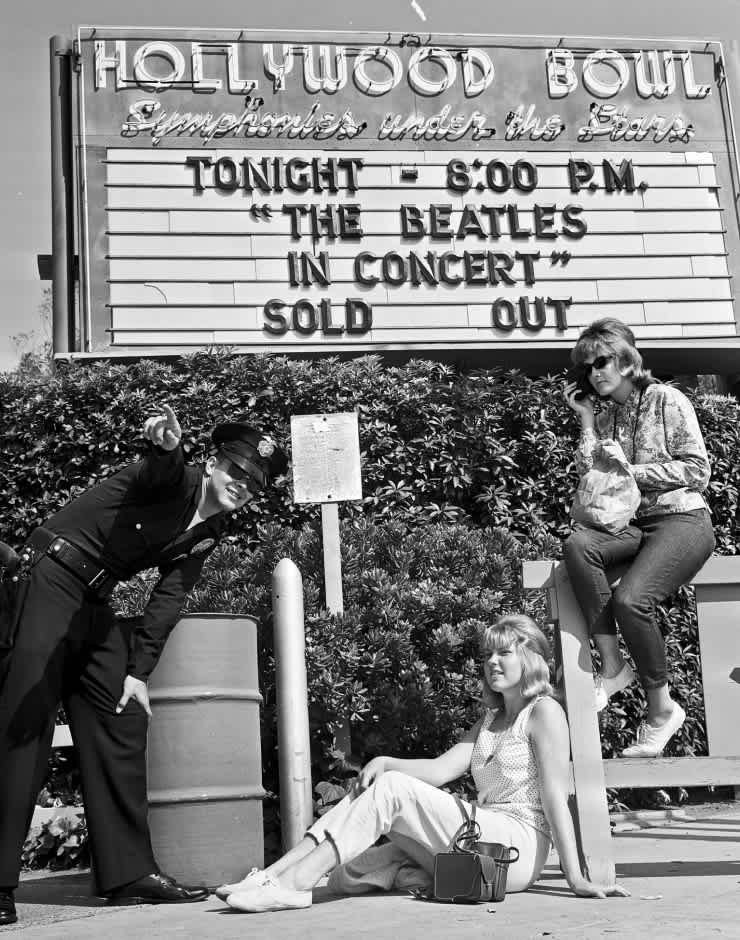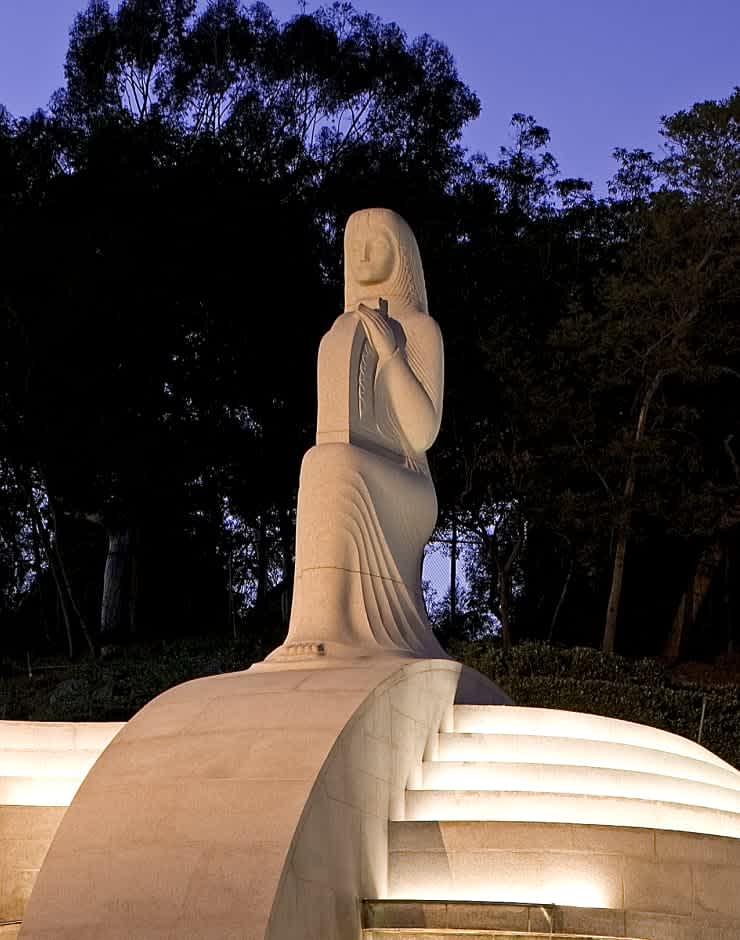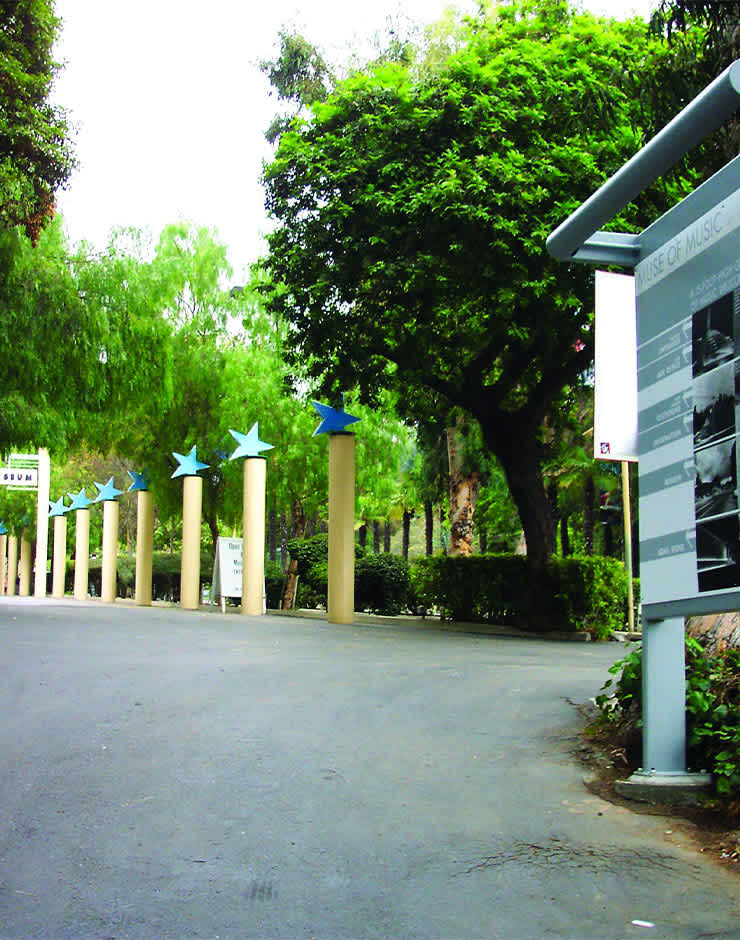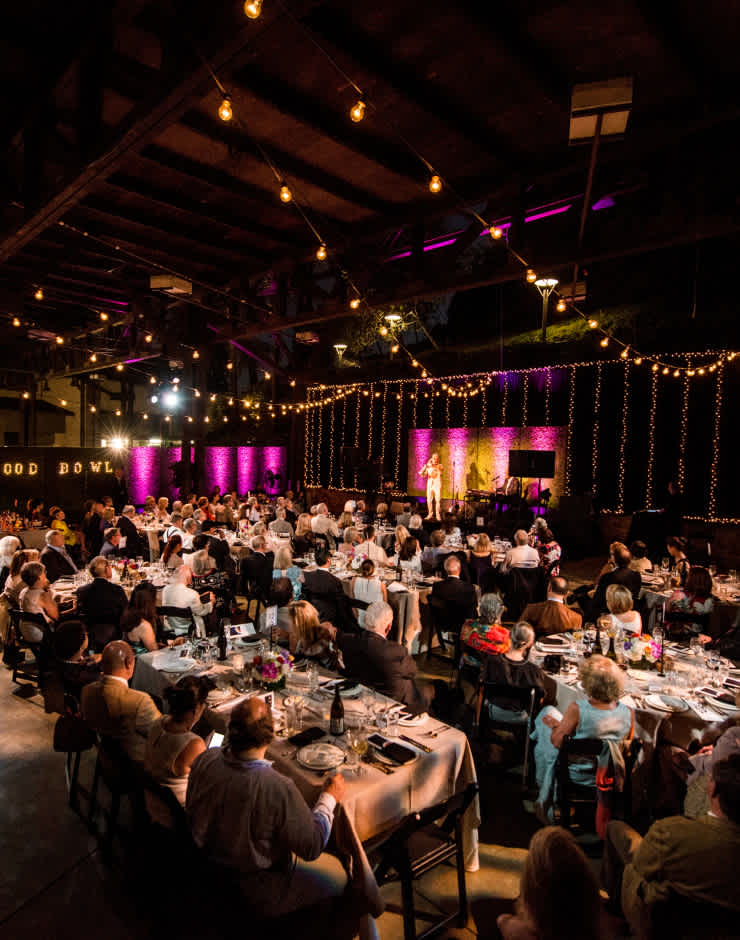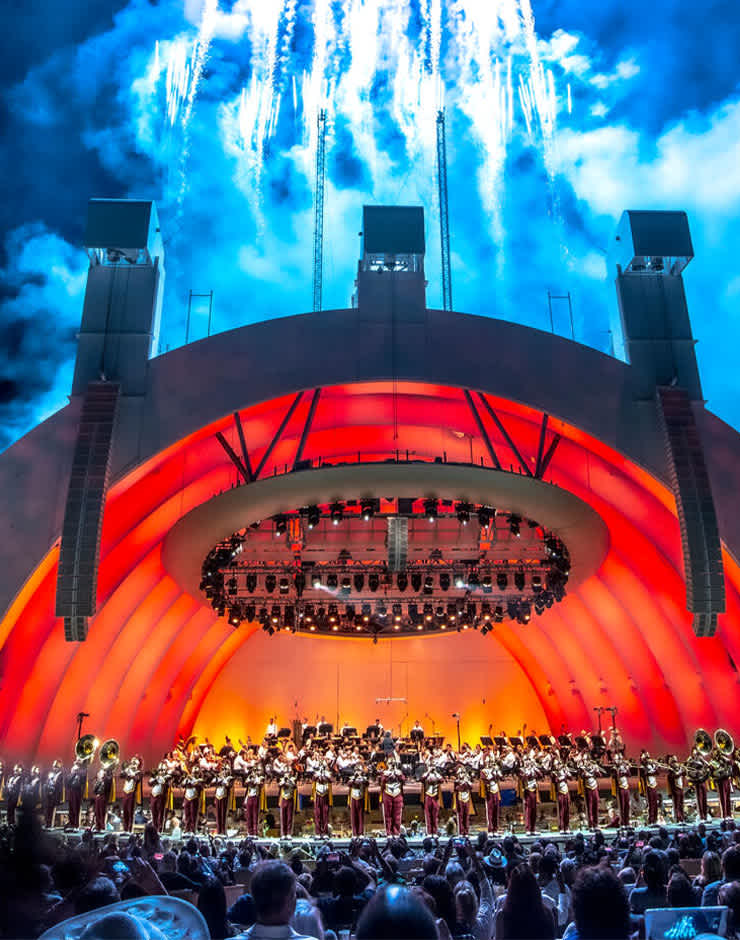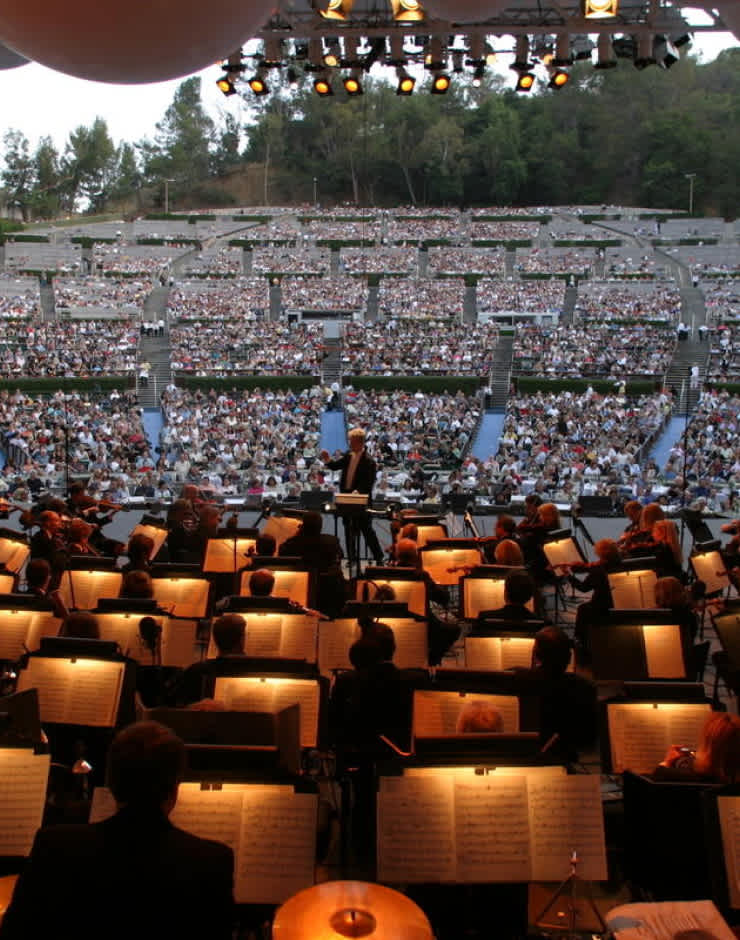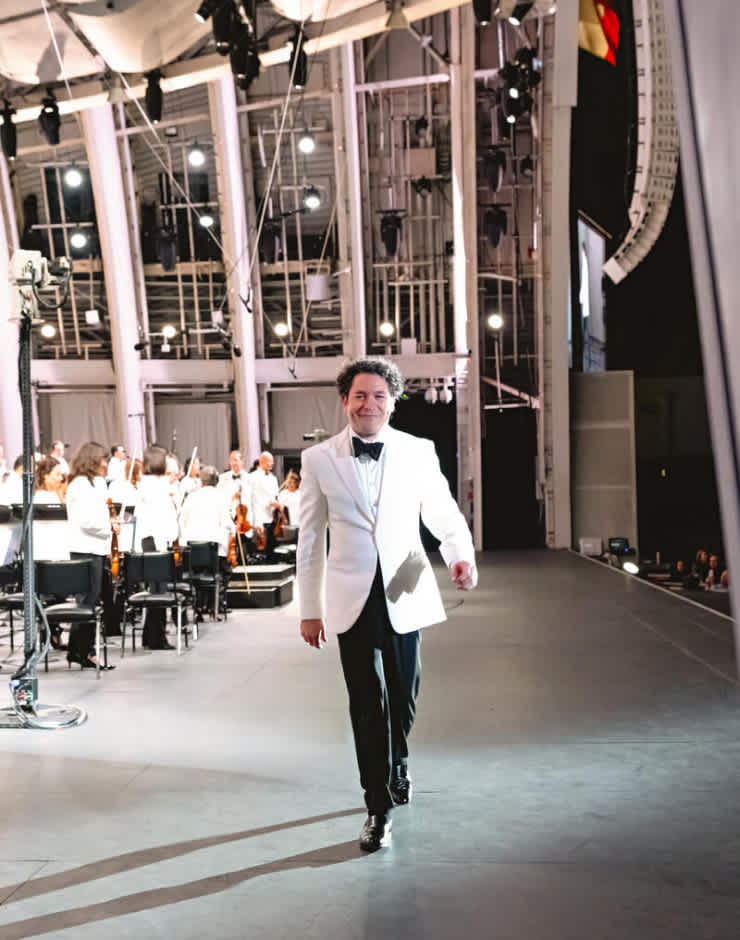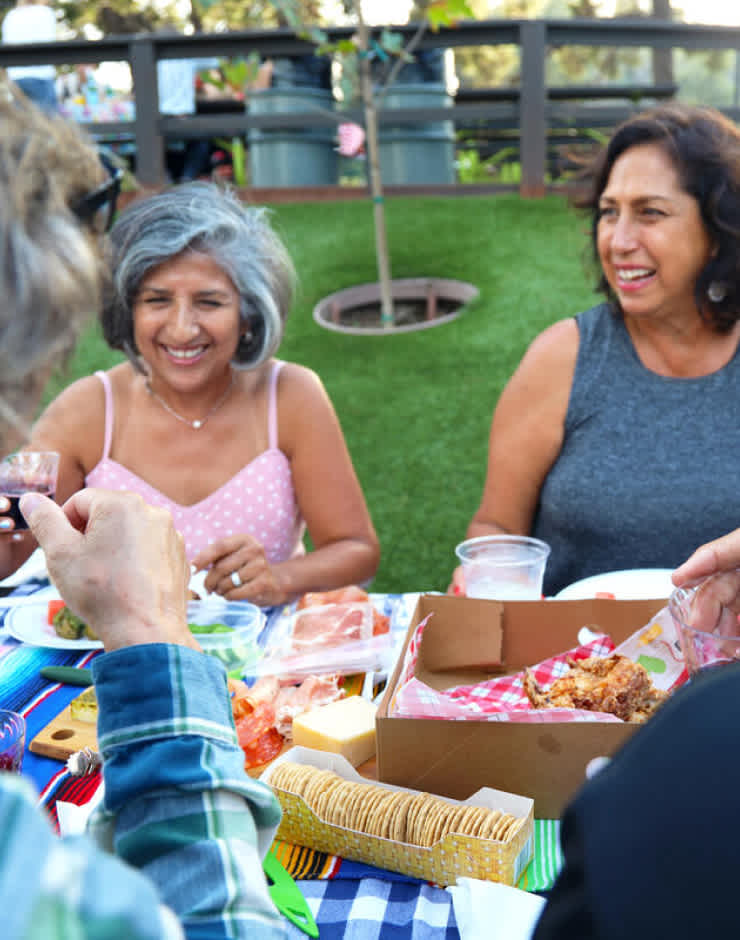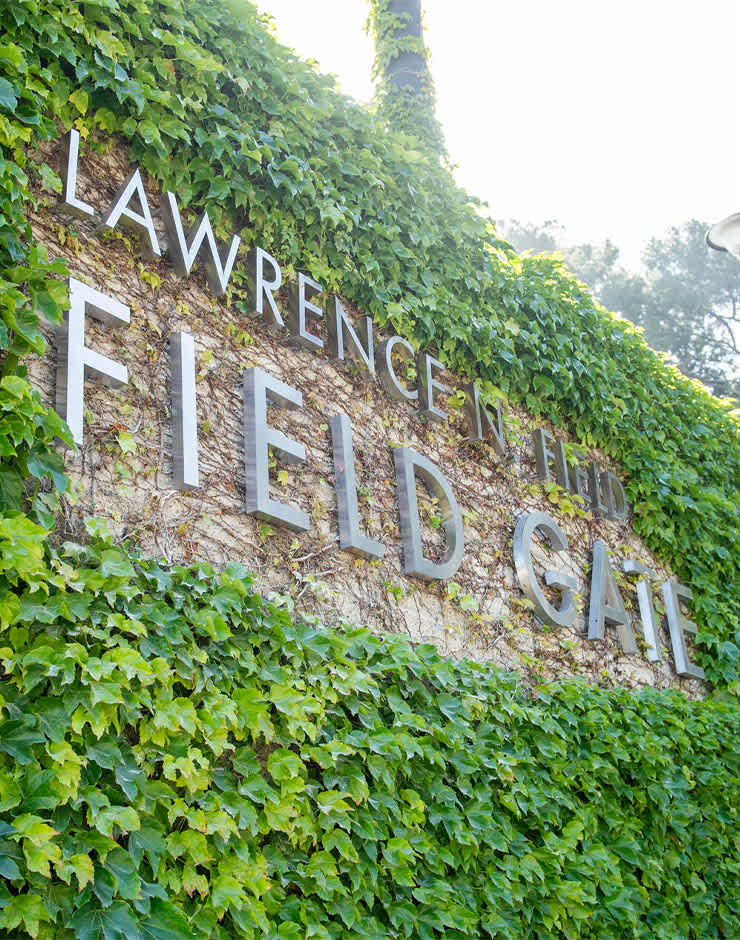The First 000 Years
Presented by
Explore Episodes
![The Marquee]()
Play Episode
Episode 1 | 9:26
MARQUEE
Seeing your name on the Hollywood Bowl marquee is one of the milestones signaling you...
![Muse of music]()
Play Episode
Episode 2 | 7:21
MUSE OF MUSIC
Born of the Great Depression and nearly lost to disrepair, the fountain complex has s...
![Episode cover]()
Play Episode
Episode 3 | 7:28
PEPPER TREE LANE
Pepper Tree Lane—the walkway that transports you to the Bowl—is named for the trees t...
![Tea Room]()
Play Episode
Episode 4 | 5:35
TEA ROOM
For decades, the Hollywood Bowl’s tea room and gardens were a gathering place as mean...
![Hollywood Bowl Shells]()
Play Episode
Episode 5 | 7:37
HOLLYWOOD BOWL SHELLS
From controversial choice to celebrated symbol, the Hollywood Bowl’s historic shells ...
![The Pool Circle]()
Play Episode
Episode 6 | 6:06
POOL CIRCLE
Of all the experiments in the Bowl design over the last century, none has inspired mo...
![SEATING AREA]()
Play Episode
Episode 7 | 8:22
SEATING AREA
Whether you prefer a box or a bench, the Hollywood Bowl experience has been a beloved...
![Backstage]()
Play Episode
Episode 8 | 7:33
BACKSTAGE
Before the current shell was installed in 2004, backstage at the Bowl was more greene...
![The Park]()
Play Episode
Episode 9 | 8:46
THE PARK
The Hollywood Bowl is an 88-acre Los Angeles County Park, filled with picturesque hid...
![]()
Play Episode
Episode 10 | 12:13
NAMED SPACES
Only a handful of truly devoted Bowl fans have been honored with a space named after ...
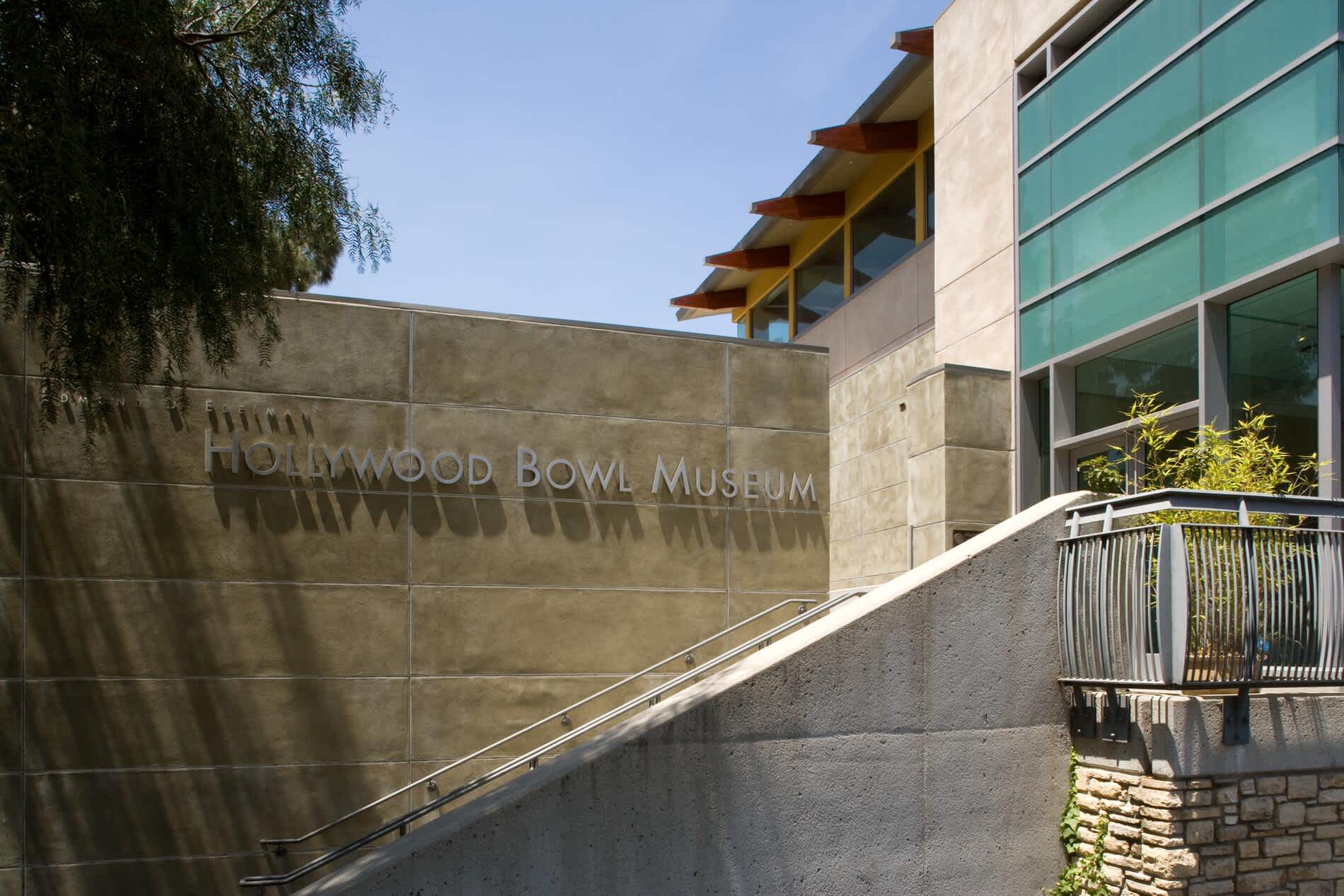
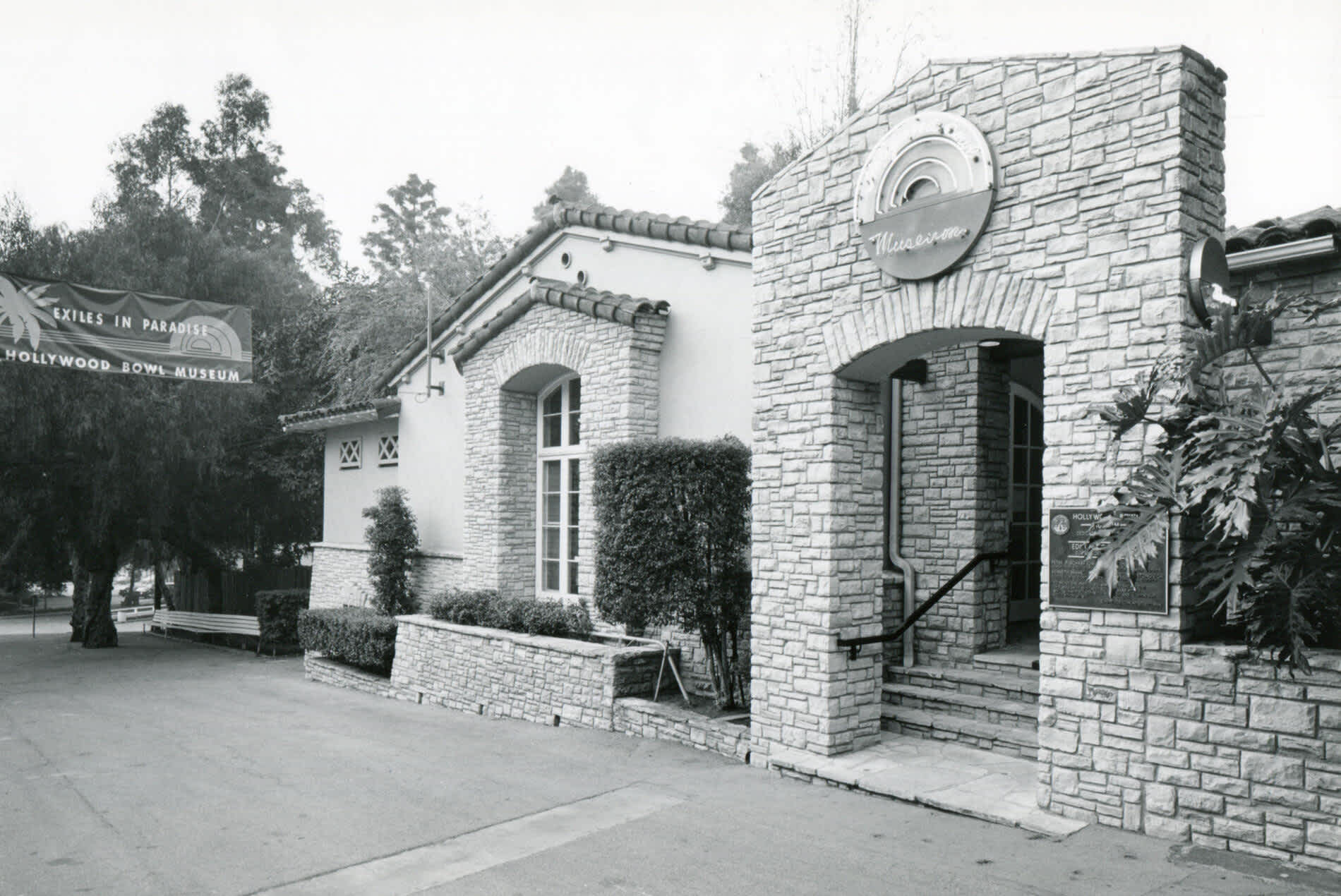
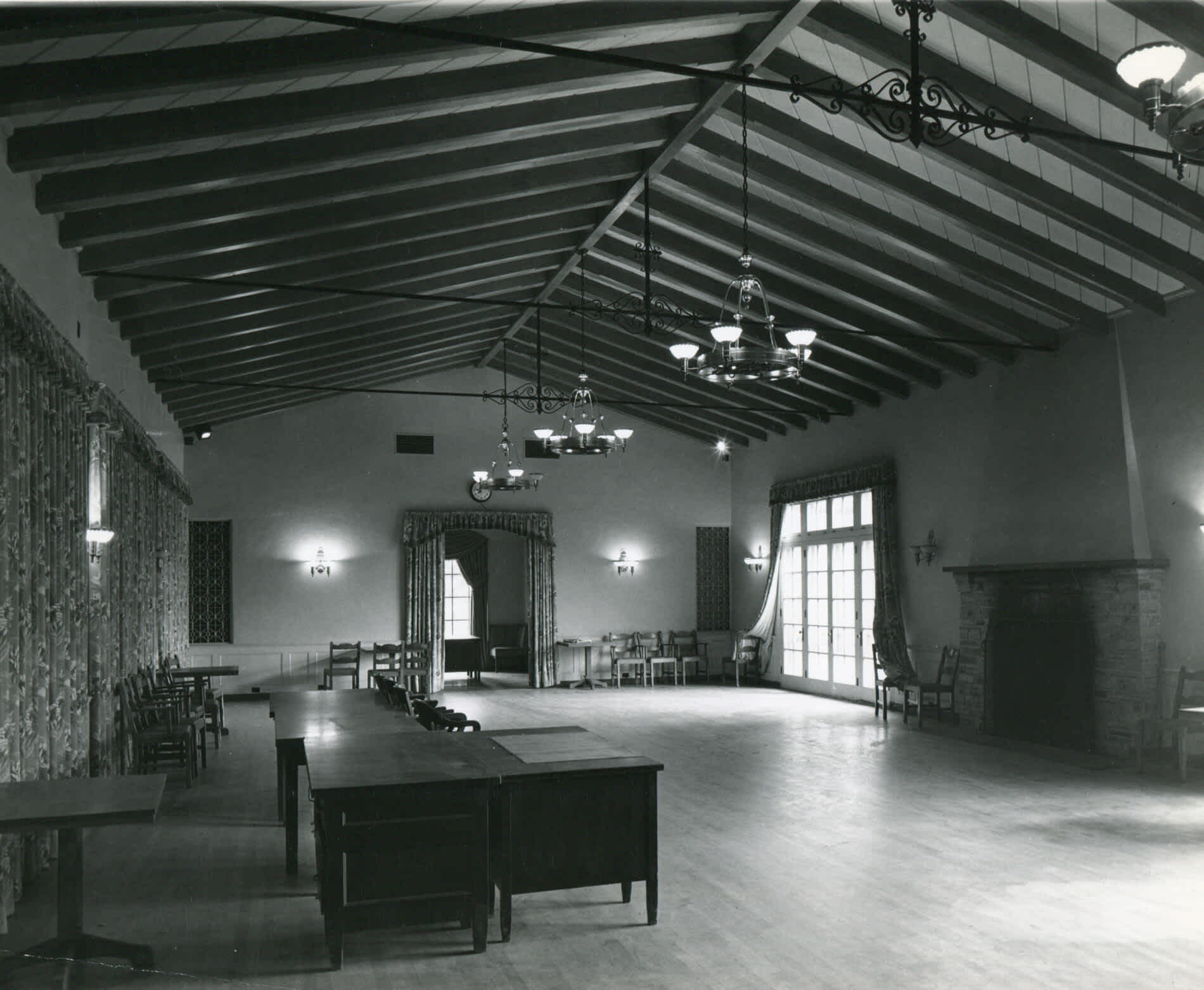
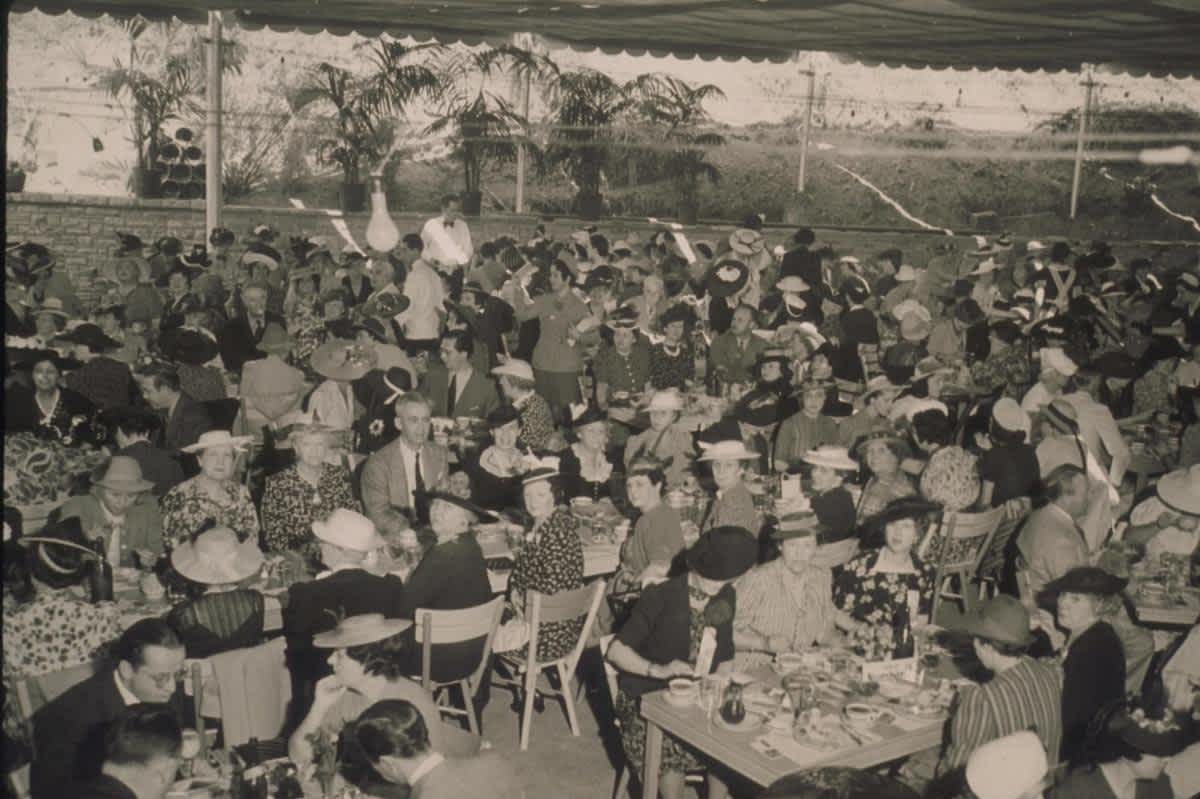
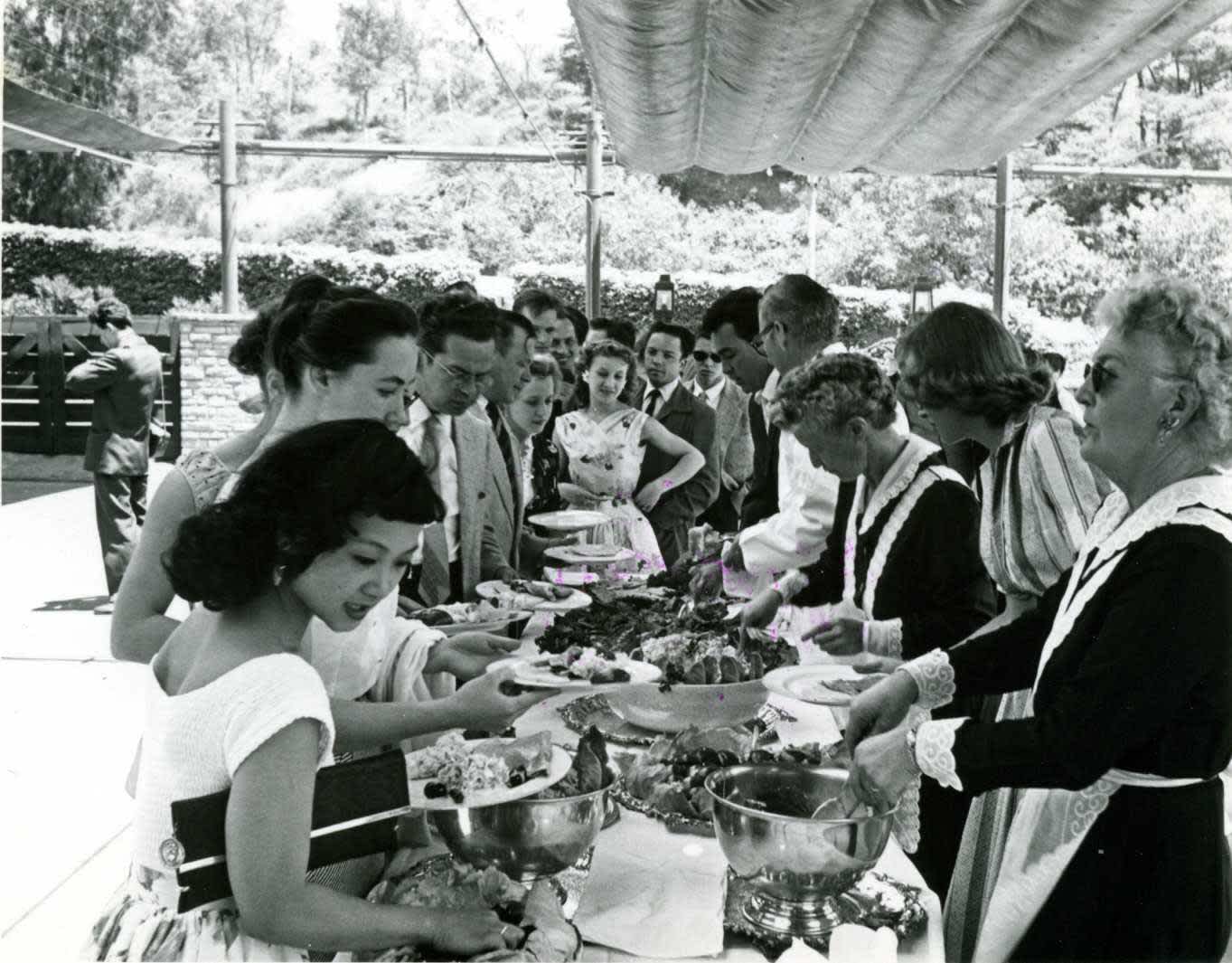

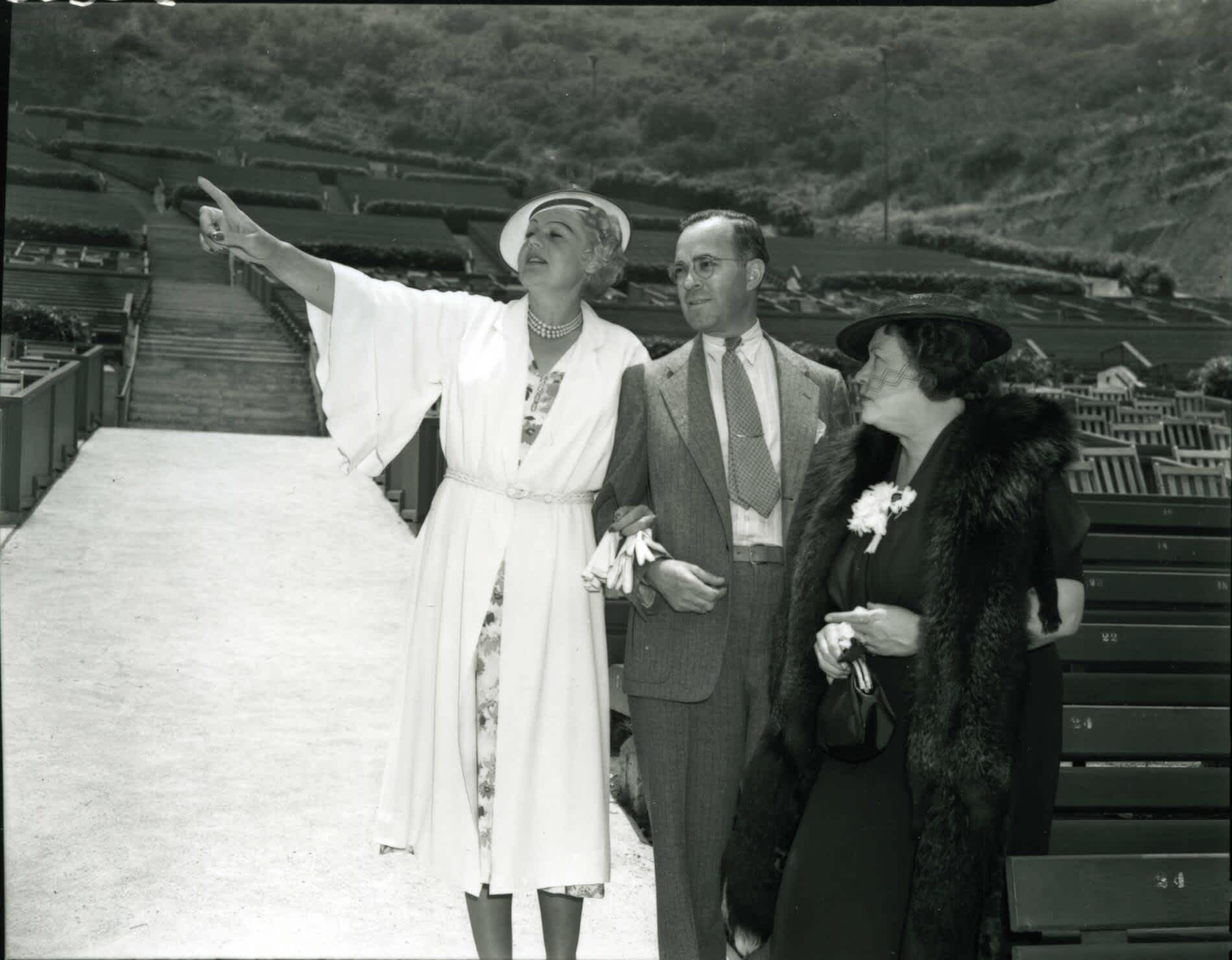
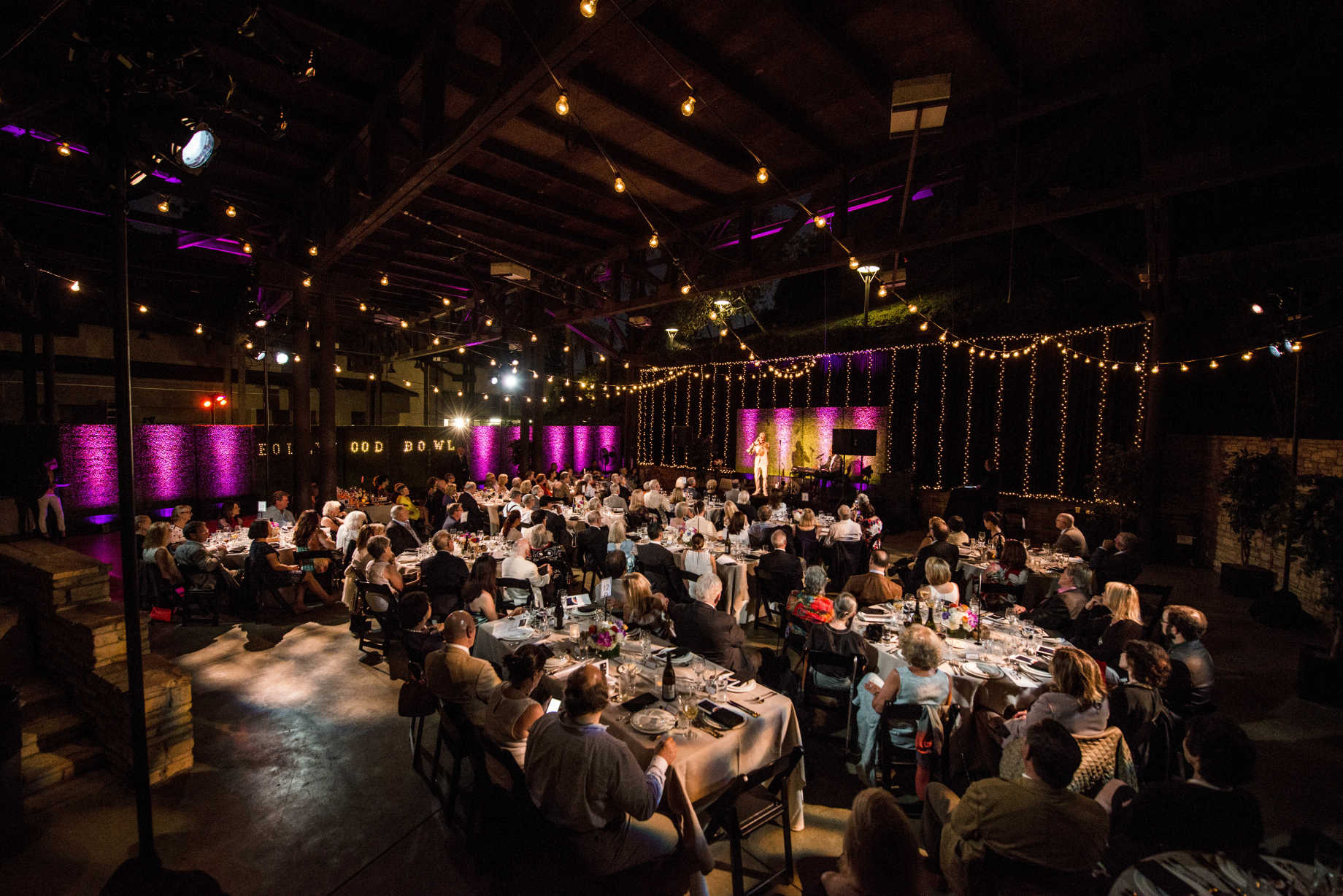
Hollywood Bowl Museum exterior seen from Pepper Tree Lane, 2007.
Photo Credit
Tom Bonner
Exterior of the Hollywood Bowl Museum soon after its remodel of the former Tea Room in 1991.
Photo Credit
Los Angeles Philharmonic Archives
Interior of the Tea Room (now the Hollywood Bowl Museum) at the Hollywood Bowl, circa 1940s.
Photo Credit
Los Angeles Philharmonic Archives
Party in the Tea Garden, in 1939.
Photo Credit
Los Angeles Philharmonic Archives
Diners in the buffet line on the Tea Room Patio of the Hollywood Bowl, circa 1957
Photo Credit
Photograph by Otto Rothschild courtesy of The Music Center
Obituary for Hollywood Bowl cateress Bertha L. Turner, Pasadena Star News. February 4, 1938
Photo Credit
Courtesy of the Pasadena Museum of History
L-R, Maria Jeritza, unidentified man, and Mrs. Florence M. Irish overlooking the Hollywood Bowl, 1938.
Photo Credit
Photograph by Otto Rothschild courtesy of The Music Center
Philharmonic Council dinner held in the Bowl’s Museum Patio
Photo Credit
Los Angeles Philharmonic
1/8
If you’ve never stopped by the Hollywood Bowl Museum, I highly recommend it. On the walls, you’ll see iconic performance photos blown up to incredible detail; historic program books, in some cases the only surviving copies of them; you’ll see models of each of the five incarnations of the shell. On the second floor, you can currently see an exhibit dedicated to David Swedlow—who volunteered to record Bowl shows in the 1950s. Because of him we have archival tapes of hundreds of performances — from Nat King Cole to Piatigorsky and everyone in between. What’s even more historic than the Hollywood Bowl Museum, however, is the ground it sits on.
In 1938, with federal funds secured from the New Deal-era Works Progress Administration, the Hollywood Bowl’s leaders constructed a gorgeous Tea Room and adjoining outdoor Tea Garden. Dozens of unemployed masons were put to work, constructing the stone structure. When it was torn down to make room for the Bowl Museum, some of the stones were saved and used to build a low wall that surrounds what we now call the Kagan Museum Patio.
The Tea Room resembled a small house, complete with a big bay window out front, illuminating an enormous fireplace inside. About 100 people could dine indoors and up to 600 could be seated in an adjacent outdoor garden.
While Bowl fare started out humble—hotdogs and popcorn—the Tea Room soon became a full-service, pre-concert restaurant. During the day it was also where the Bowl’s one-time leader Florence Atherton Irish held weekly teas where she’d muster and inspire her army of volunteers. I really can’t say enough about Mrs. Irish—who programmed the Bowl and the Philharmonic’s concerts downtown from 1926 to 1944, ran marketing for both venues, managed the operations and grounds of the Bowl, and was the last person to leave the concerts at night.
One of her volunteers said her energy was like “the sun rising over the earth,” with an irresistible warmth and friendliness that held everything together. The volunteer also said that her lifestyle at the time, getting up at the crack of dawn for one function or another, “would have killed three men.”
In the 1930s, the community of Hollywood was effectively a Sundown Town—where officials used formal and informal means to keep African Americans out of the city after 6pm. During this time, the Bowl booked Black artists to headline shows and hired William Grant Still to conduct a concert of his own music. The Bowl became a gathering place for all-Black choirs; and, for about three years, the Tea Room was run by Bertha Turner, a caterer, entrepreneur, philanthropist, and champion of Black music.
The child of enslaved parents, Turner was a self-made millionaire who built a catering business in Pasadena, second to none in Southern California. Her menus for the Tea Garden were varied and elaborate, providing a Southern-inspired cuisine for sit-down dinner service (entrees included spring lamb or rib roast; picnic service to-go including lamb, ham, or prime rib sandwiches), and after-concert dinner service for the night owls.
Turner’s work ethic possibly outpaced even Florence Irish’s—as she ran the Tea Room, her catering business, and worked to open a cultural center in Pasadena dedicated to advancing and celebrating the work of Black musicians. Sadly, Bertha Turner suffered a sudden collapse in her kitchen in 1937 and never recovered. She passed away in February 1938. The entire city mourned her death, including the more than 1,500 people who attended her funeral in Pasadena.
I’ll admit that I walked by the Bowl Museum a couple thousand times before I ever ventured inside. In my research, I’ve had the joy of getting to dig through the thousands of documents, photographs, objects, and posters that make up the Museum’s collection. Among the papers, I’ve found clues to the life of Bertha Turner and Florence Irish. I’m convinced there are so many more stories living in the archives, just waiting to be retold.
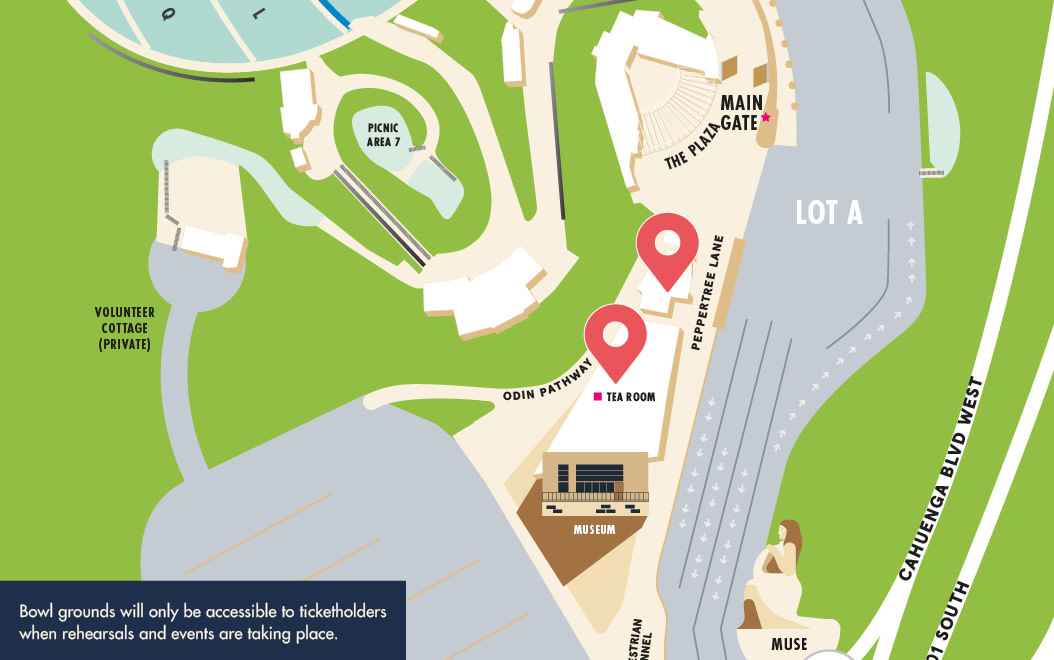
0:00
0:00
